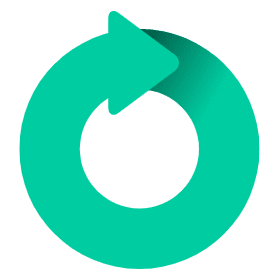1.3 billion tons of food goes to waste each year.
A staggering one-third of the world’s food production, equivalent to about 1.3 billion tons, goes to waste each year. This isn’t just an economic loss—it’s a loss of resources, energy, and a social justice issue. This page will unravel the complexities of food waste and explore actionable solutions you can implement to make a difference.
Understanding the Roots
It all starts with food surplus. Food surplus occurs when an excess supply of food is created beyond what is needed or consumed. It is a natural phenomenon that happens with overstocked inventory in grocery stores, excess production on farms and restaurants, and retailer overordering. When we cook and produce leftovers, those are considered food surplus since they’re just an extra supply of food that’s still good to eat. However, when we don’t control that surplus, it becomes food waste.

ZeroWaste.Org defines food waste as a subset of food surplus where edible items are discarded or lost throughout the food supply chain. Some examples of food waste occur when overstocked surplus at grocery stores are discarded, farm-level surplus is discarded, and food spoilage occurs at home. Addressing these instances of food waste involves a combination of consumer awareness, improved logistics, and more sustainable practices across the entire food supply chain.
The web of food waste begins with American households (43%) and food establishments (40%), where excess or misunderstood expiration labels lead to disposal. Farms (16%) and manufacturers (2%) also play a role. The key lies in addressing each contributor to create a sustainable food ecosystem. – RTS
Where our waste comes from:
United States Leads in Food Waste
The U.S. tops the charts, wasting 30 million tons of food annually. EPA estimates that in 2019, about 96 percent of households’ wasted food ended up in landfills, combustion facilities, or down the drain to the sewer system. The remainder was composted. – Environmental Protection Agency
Environmental Impact of Landfills
The release of methane, often associated with decomposing organic waste in landfills, accelerates climate change. According to the World Wildlife Federation, the production of wasted food in the United States is equivalent to the greenhouse emission of 37 million cars or 42 coal-fired power plants. – World Wildlife Federation and Environmental Protection Agency

Cost of Wasted Food
In 2021, surplus food cost the country $444 billion. Of this, 70% – $310 billion – was due to food waste. While the financial cost of uneaten food is greatest for consumers, food surplus within all food industry sectors was worth about $215 billion. The average family of four spends $1,500 yearly on uneaten food. – ReFed
7 Most Wasteful Fruits
In a study done in Swedish supermarkets, the seven products that stood for most of the waste with regard to quantity, environmental impact, and cost were bananas, apples, tomatoes, lettuce, sweet peppers, pears, and grapes. They represented nearly half of the total waste. Of the 7, bananas were wasted more than any other product in overall weight, and they also have the highest climate impact. – ScienceNordic
Food Waste Recovery Hierarchy
The food waste recovery hierarchy is a strategic framework designed to prioritize actions that maximize the value of food resources and minimize waste. At its core, the hierarchy emphasizes prevention as the primary focus—encouraging efforts to avoid generating excess food. When waste is inevitable, the next steps include redistribution to those in need, followed by recycling and recovery for alternative purposes like composting or energy generation. Disposal, the last resort, involves sending food waste to landfills, contributing to environmental harm through the release of methane, a potent greenhouse gas. The hierarchy guides stakeholders in making informed decisions to create a more sustainable and resource-efficient food system.

Ways You Can Help
Personal
1. Food Guide to Meal Preparation: Transform your kitchen into a waste-fighting haven! Check out our food guide that streamlines meal preparation, helping you buy wisely and use ingredients efficiently.
2. Understanding Refrigeration: Learn smart storage tips that keep your food fresh for longer and reduce the chances of tossing perfectly good items.
3. Expiration Label Clarity: BEST IF USED BY describes quality “where the product may not taste or perform as expected but is safe to consume”. USE BY applies to “the few products that are highly perishable and/or have food safety concerns over time.” – RTA
For more check out Foodprint’s Take Action page.
Business
1. Restaurant Waste Reduction Tips: Toast has a very useful blog detailing innovative strategies to minimize food waste, from reducing spoilage to implementing restaurant policies.
2. Returnable Containers Program: Over its lifespan, one reusable takeout container can save up to 1,000 other types of takeout containers from entering our landfills, an important step towards achieving zero waste goals. The city of Ann Arbor has started this initiative, and if you’re not in Ann Arbor, contact us; we’d love to help you get rolling in your city!
3. Reduce End-of-Day Surplus: Explore ways to reduce food waste at the end of the day through programs or apps such as Too Good to Go! This is a valuable source for bakeries, restaurants, and supermarkets.
Schools
1. EPA Lunch Program Waste Audit: This powerful tool created by the U.S. Environmental Protection Agency helps schools identify and tackle food waste challenges. The data gained from an audit will help schools develop strategies to reduce food waste and encourage students to eat nutritious meals.
2. Offer versus Serve Program: The Offer versus Server (OVS) by USDA is designed to guide students toward selecting three out of the five key food groups during school meals. This not only promotes balanced nutrition but also reduces plate waste for a more sustainable school environment.
3. School Composting: This eco-friendly practice not only diverts waste from landfills but also nurtures nutrient-rich compost for school gardens, creating a hands-on lesson in environmental stewardship for students.
4. Durable Lunch Trays: Explore the pragmatic benefits of durable lunch trays designed to withstand the rigors of daily use. Beyond their sturdiness, these trays play a crucial role in reducing single-use plastic waste, aligning with a sustainable approach to cafeteria operations.
City
1. Returnable Containers Program: Encourage local businesses to adopt using reusable takeout containers that can save up to 1,000 other types of takeout containers from entering our landfills. Learn more about returnable containers here.
2. Host a Citywide Challenge: Our weeklong challenges put food waste solutions front and center. Large scale public outreach is a perfect tool for issues like food waste that have a significant behavioral element. Reach out to us to host a citywide zero-waste challenge!
3. Apply for Grants: Apply for grants that can help further various food waste projects! USDA NIFA has been very supportive
Other Great Sources
- Food Waste and Recovery by Michigan.Gov
- These are the fruits and vegetables we waste the most by ScienceNordic
- Fight climate change by preventing food waste by WWF
- Preventing Wasted Food at Home by EPA
- UNEP Food Waste Index Report 2021 by UN
- Food Waste in America in 2023 by RTS
- How to Track and Reduce Restaurant Food Waste by Toast
